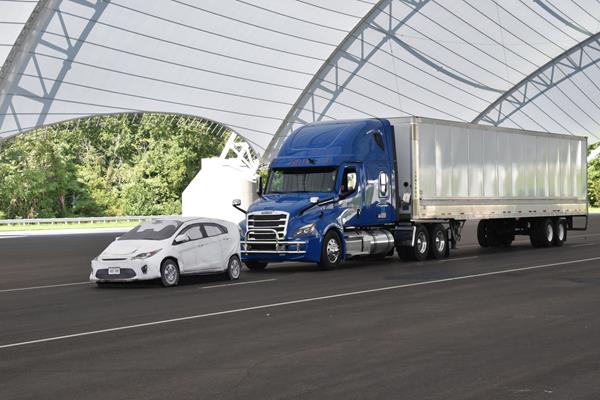In an effort to decrease the frequency and severity of rear-end collisions, U.S. regulators are considering a requirement for automatic emergency braking (AEB) systems on heavy vehicles.
On June 22, the U.S. National Highway Traffic Safety Administration (NHTSA) and Federal Motor Carrier Safety Administration (FMCSA) revealed their proposed rulemaking in a bid to mandate automatic emergency braking (AEB) systems for heavy vehicles.
AEB systems employ radar and camera-based sensors to identify potential crash scenarios, automatically applying brakes if drivers have not responded or providing additional braking force to complement driver actions.
According to the proposed standards, the technology would be required to operate effectively within the speed range of 6 to 50 mph (10 to 80 km/h).
Regulators assert that the adoption of AEB tackles a significant safety issue. According to the National Highway Traffic Safety Administration (NHTSA), heavy vehicles are involved as the striking vehicle in approximately 60,000 rear-end crashes each year, accounting for roughly 11% of all heavy vehicle-related crashes. Based on their projections, the proposed rule has the potential to prevent an estimated 19,118 crashes annually, save 155 lives, and avert 8,814 injuries.
The proposal to mandate AEB systems in passenger vehicles and light trucks is anticipated to result in saving 360 lives per year and reducing injuries by at least 24,000 annually.
In addition to the AEB requirement, the notice for heavy vehicles also includes proposals for new Federal Motor Carrier Safety Regulations that would mandate electronic stability control and the mandatory activation of AEB systems while operating the vehicles.
In 2015, the Truck Safety Coalition, Center for Auto Safety, Advocates for Highway and Auto Safety, and Road Safe America jointly petitioned for the inclusion of automatic forward collision avoidance and mitigation systems in heavy vehicles. The current rulemaking aligns with the recommendations put forth by the National Transportation Safety Board, emphasizing the potential of these systems to save lives.
NHTSA initiated research on the related technologies over 15 years ago. In their recent findings, they discovered that a 2021 Freightliner Cascadia equipped with AEB could successfully prevent collisions with leading vehicles within the speed range of 40 to 85 km/h.
NHTSA’s chief counsel, Ann Carlson, emphasized the life-saving potential of advanced driver assistance systems such as AEB, stating in a press release, “Today’s announcement marks a significant stride towards enhancing safety on our roads, aiming to reduce and ultimately eliminate preventable tragedies that inflict harm upon Americans.”
FMCSA Administrator Robin Hutcheson emphasized the significance of AEB standards as a crucial element of the Department’s National Roadway Safety Strategy, stating, “This technology has the potential to bolster the efficacy of strategies aimed at reducing commercial motor vehicle crashes and decreasing roadway fatalities.”
The American Trucking Associations (ATA) expressed their approval of the proposal, stating, “ATA has consistently advocated for the adoption of AEB in all new vehicles.” ATA Vice President of Safety Policy, Dan Horvath, remarked that the timing and relevance of the proposal for heavy-duty trucks align with NHTSA’s recent regulation mandating AEB in new passenger vehicles.
Furthermore, he added, “The trucking industry is in favor of utilizing established safety technologies like automatic emergency braking. We anticipate reviewing the proposal put forth by NHTSA and FMCSA and collaborating with them during its implementation process.”
Source : trucknews.com







